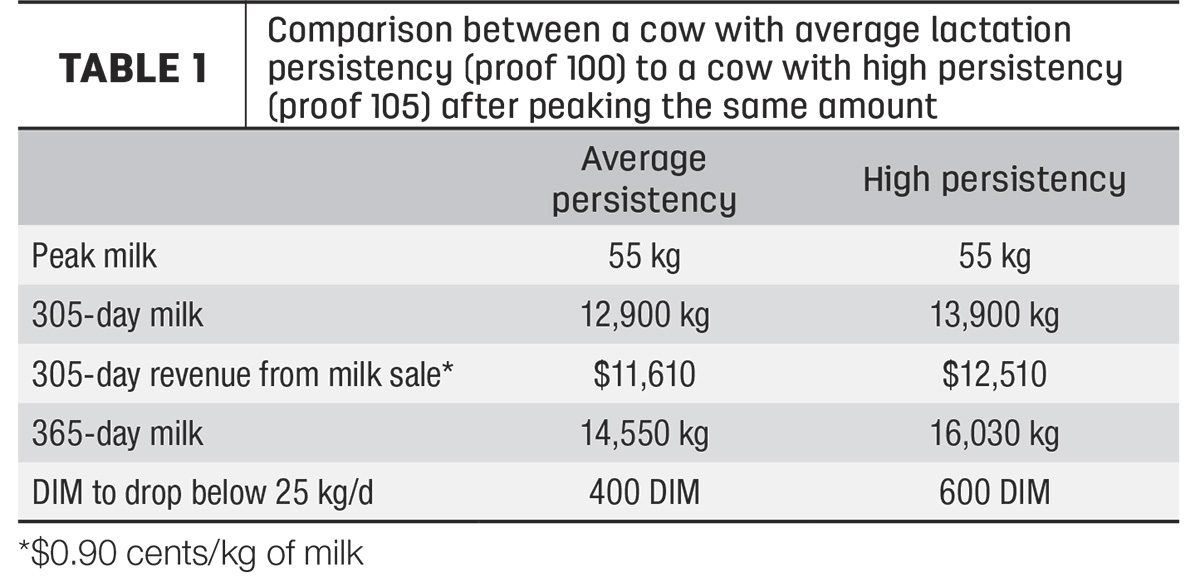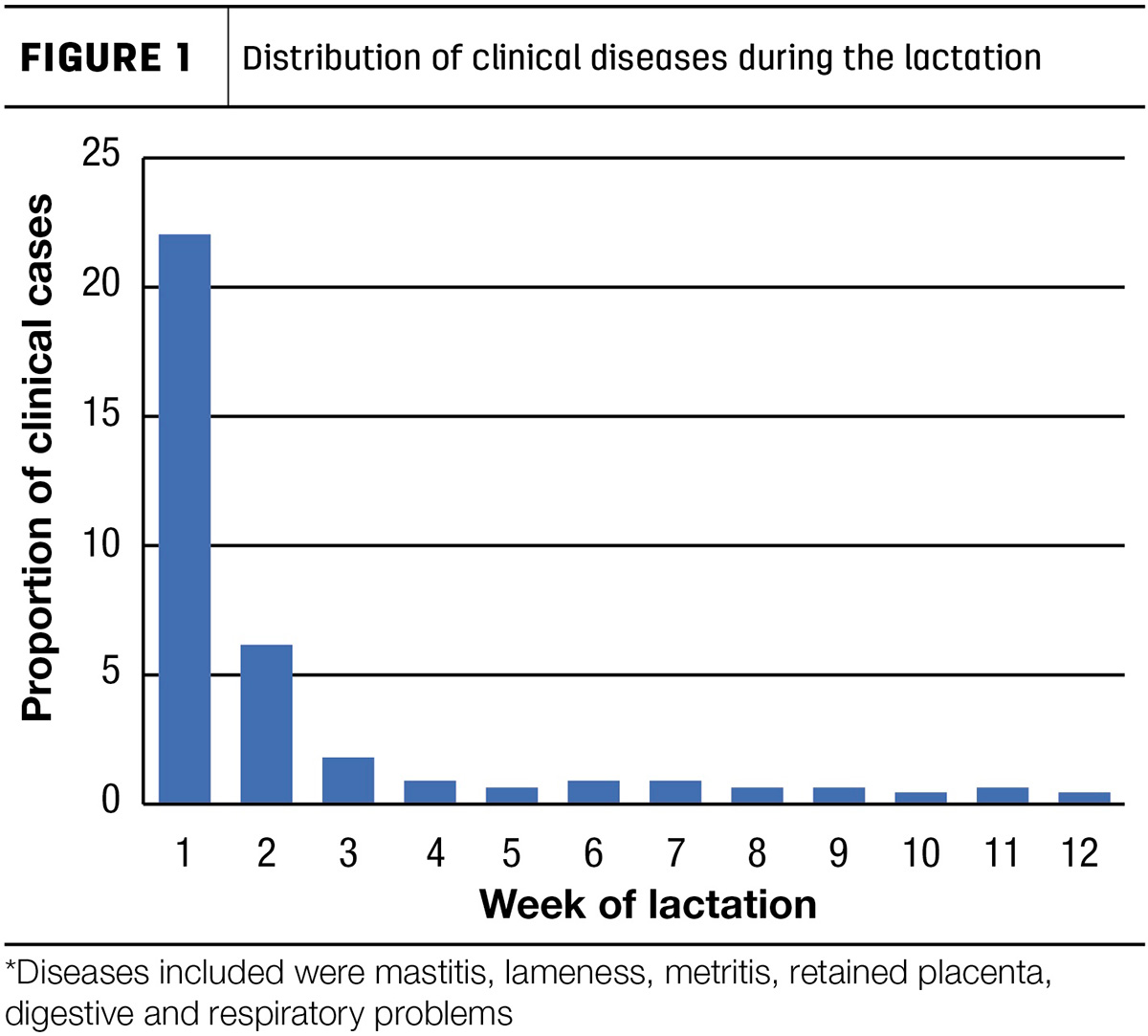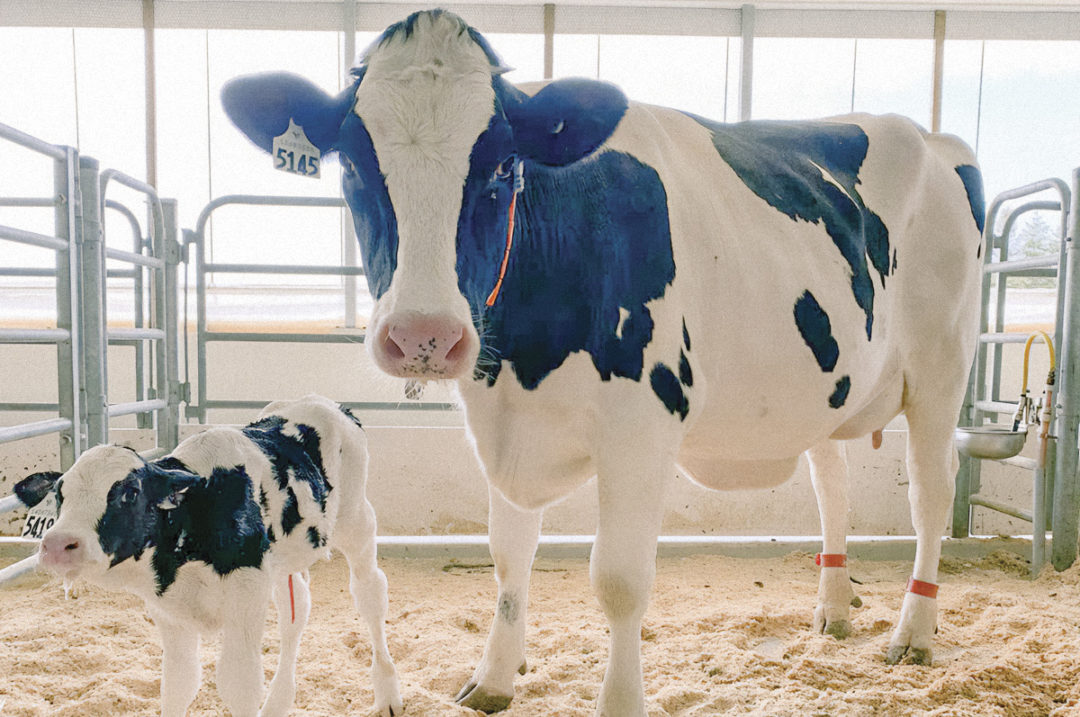To read this article in French, click here.
If you talk to any dairy farmer around the world about their goals, most of them (if not all) will mention improving production. It is not hard to understand: Producing milk is the reason a dairy farm exists; milk sales are the primary income for 99% of dairy farmers. The differences between the farms revolve around how they manage their production system and environment (type of barn, pasture-based, pasture with supplementation), which breed they use, type of parlour… the list goes on. But a lot of it comes down to the actual cow. In Canada, we have a unique genetic evaluation trait that evaluates the ability to sustain production over time; lactation persistency compares the production at peak lactation with the production at 280 days in milk (DIM). By selecting cows with high lactation persistency, you manage to get larger amounts of milk without asking your cows to reach higher peaks.
Understanding genetic evaluation
Like all the other functional traits’ evaluations, lactation persistency is expressed on an 80-to-120 scale, with 100 as the average and 5 units as the standard deviation. An average female (100 proof) will produce about 60% of the peak milk at 280 DIM. Every 5 points represent a difference of about 3% more or less persistency.
It is also important to remember that most animals will have an evaluation between 95 and 105. Fewer than 5% of them have proof above 110. Still, it is possible to use the trait as an extra parameter when selecting for production; similar production with higher persistency is certainly desirable.
Lactation persistency x total production
A cow with better lactation persistency is likely to produce more at the end of a lactation than a herdmate with average persistency. In Canada, this trait has a positive genetic correlation to all other production traits, such as milk, fat and protein yields, as well as mastitis resistance and somatic cell score. In practical terms, if you are selecting for persistency, you will end up benefiting from higher milk, fat and protein production while increasing your cows’ genetic capacity to have a healthier udder.
Table 1 compares two cows that have similar peak lactation but different genetic abilities to sustain production. Note that even though they reach similar peak production, one ends up producing 1,000 kilograms more while keeping a higher production level for longer.

More milk with less metabolic challenges
It is well known that the beginning of the lactation has a large role in determining the success or failure of that lactation. As we select animals that can produce larger amounts of milk, we are asking more and more from their metabolism. Every dairy farmer knows how tough this is for animals; the negative energy (and nutrient) balance is a very well-known term to farmers. Basically, these cows are not physically able to consume the amount of feed necessary to provide all the nutrients required to produce all the milk they produce. While many cows manage to handle it, this is also the period when they become the most susceptible to different diseases. Figure 1 shows that about 1 out of every 3 clinical disease cases occur during the first month of lactation – exactly when the intake is low compared to the corresponding milk production.

The ideal cow is persistent
If we surveyed dairy producers to describe their ideal cow, “profitable” would be a very common word. To be profitable, a cow must generate more income than cost, meaning she must milk well with high fat and protein. To achieve that, we must get our cows pregnant quickly enough because they are not as productive after some months in milk. However, the approach changes a bit if the cow can sustain very high levels for several months.
As mentioned above, higher persistency brings a larger window of profitability, so these cows generate more income than costs for a longer period of time. Therefore, we can say the ideal cow would have a lactation curve that peaks well but is as flat as possible after that peak – the result: a cow that requires a pregnancy less often, creating less transition concerns for the producer, a cow that lasts much longer.
Reducing the fertility (and culling) problem
In Canada, the main reason for involuntary culling is fertility: Over 20% of the cows sold for beef are due to reproductive issues. However, these cows are not necessarily infertile or not able to become pregnant at all. They were likely not able to become pregnant within the normal time span the producer would consider optimal. It is more of an economic decision than the cows' actual fertility. If I asked a producer to pick between two cows to send to the sale barn, that producer would probably ask two questions: "Are they pregnant?" and "How much milk are they producing?" It is safe to say how long ago that cow calved would not be a primary deciding factor – it is more likely a producer would give another insemination attempt to breed an open cow milking 40 kilograms a day even if she was at 250 DIM.
The longevity payoff
In a herd that can hold higher production for longer, you can choose to extend the voluntary waiting period (VWP, the time into the lactation until you start to breed the cows) and/or have more opportunity to get a cow pregnant without reaching a point where she becomes unprofitable. The higher production over time helps to keep cows from gaining weight in later lactation, resulting in fewer metabolic problems and other diseases once they calve again. You are combining higher production without extra taxing on the cows’ metabolism (lower disease risk), which increases the chances for them to become pregnant (and remain in the herd), further reducing their risk to have metabolic problems in the next lactation. Not a bad deal.
In Canada, we are able to not only genetically select for higher milk production but also a better lactation curve. This gives an edge to those producers looking to boost production while managing to have an extra gain in terms of longevity and profitability. More and more very well-managed herds across the country are choosing to extend the lactation period of their animals as a resource to increase longevity and reduce costs. It requires caution, and a holistic approach within the herd, but it can be a very interesting and profitable approach for those animals that hold their production for a long time.









